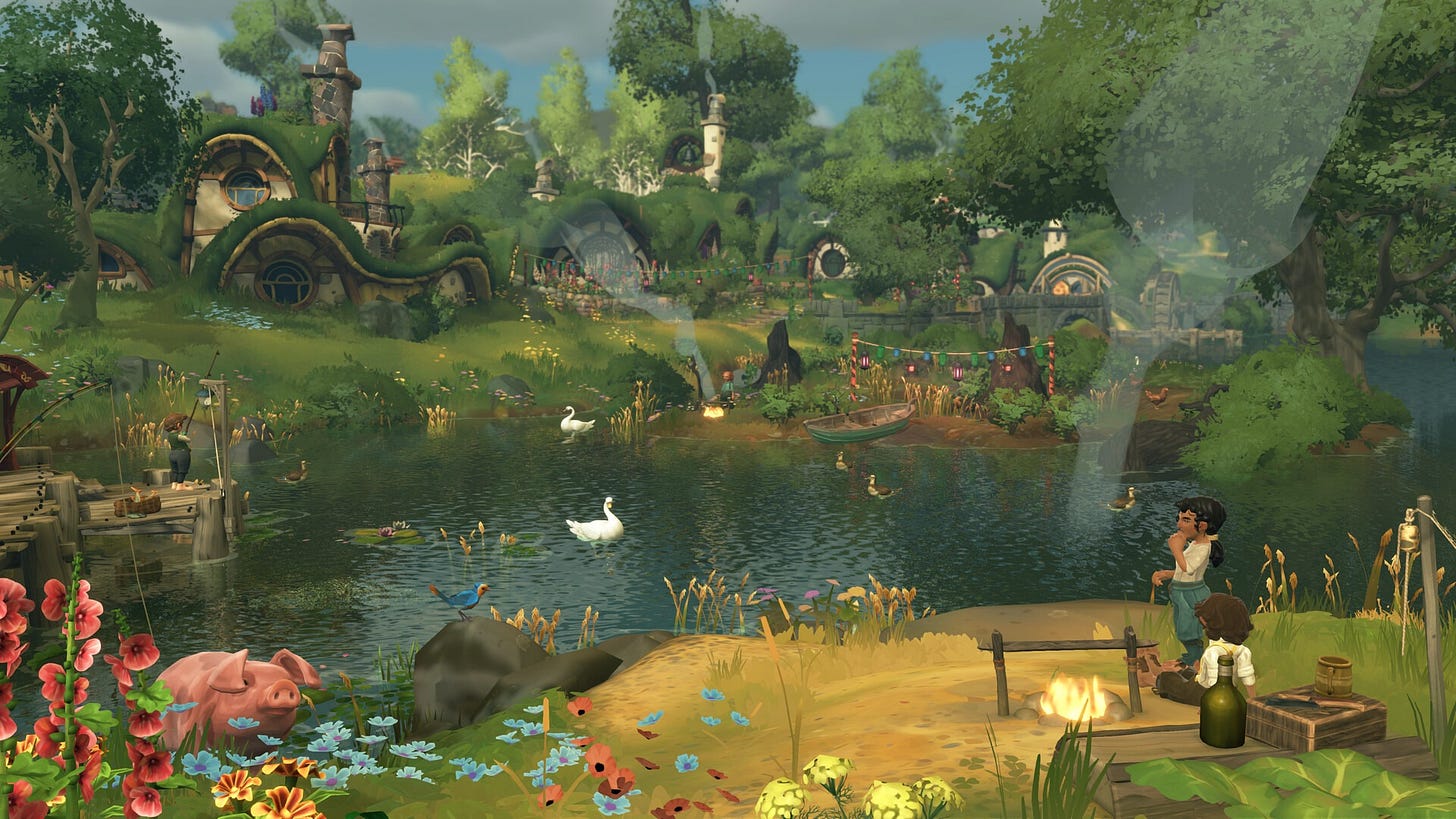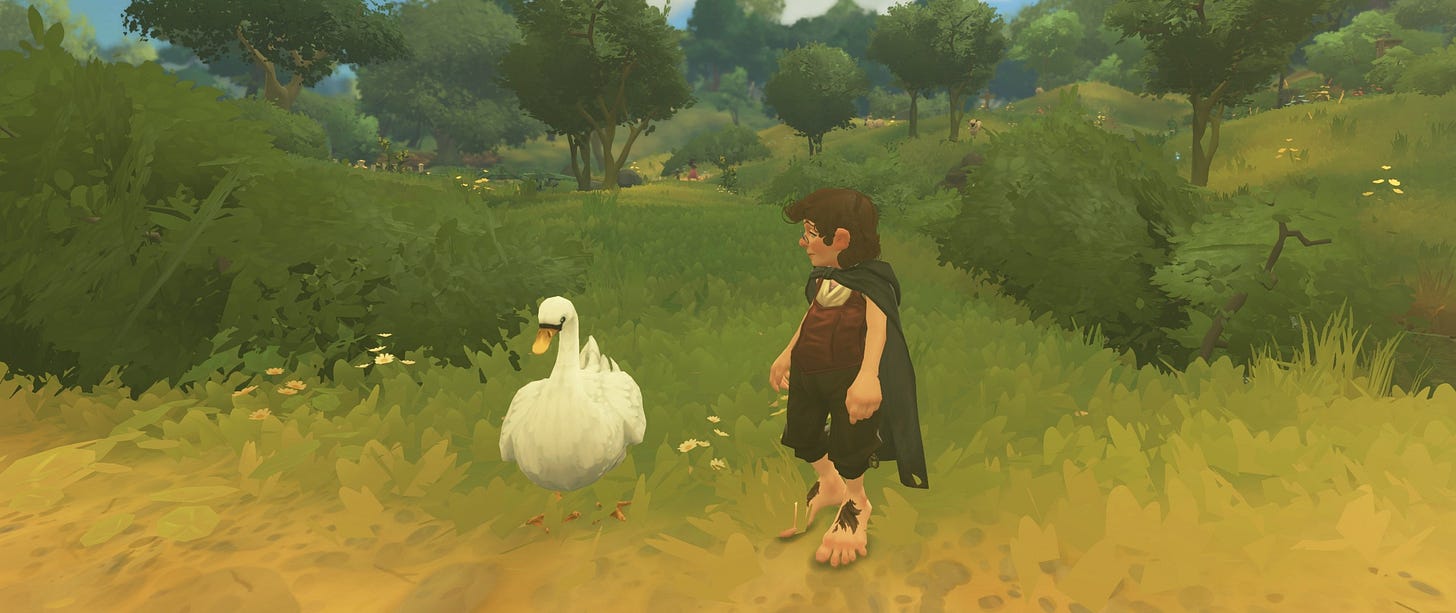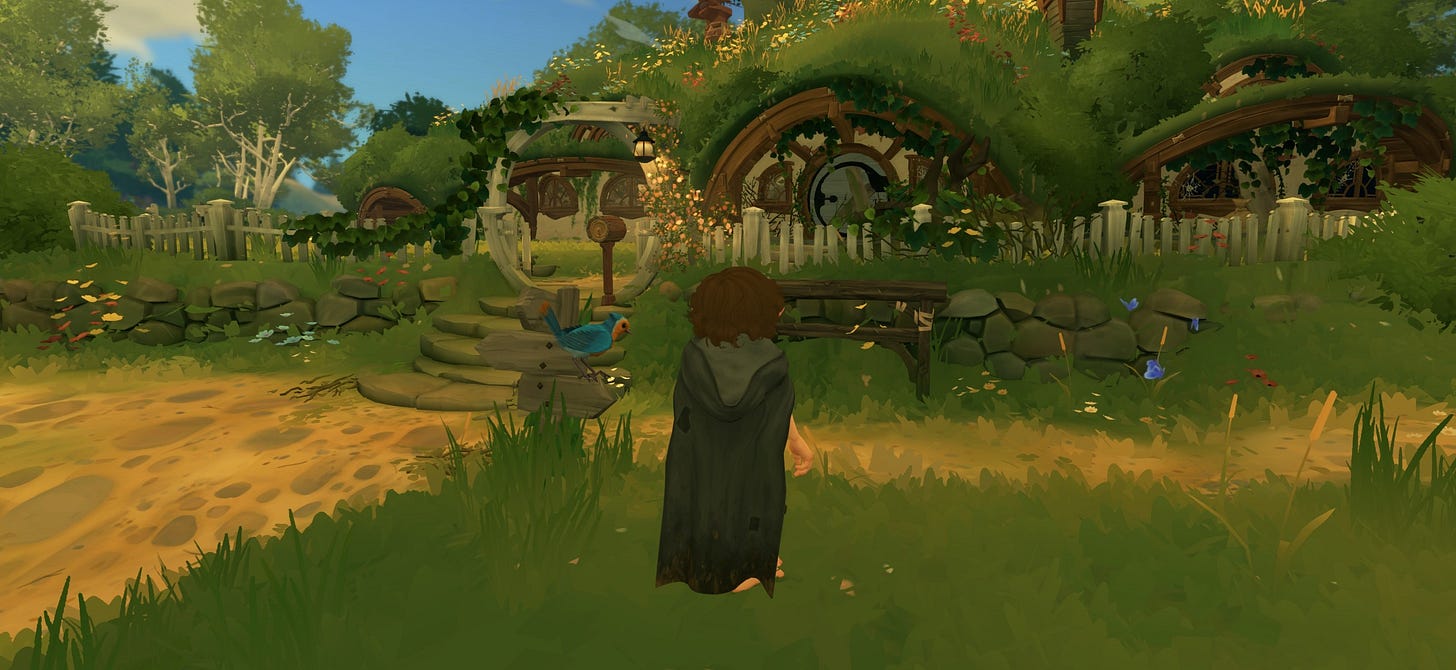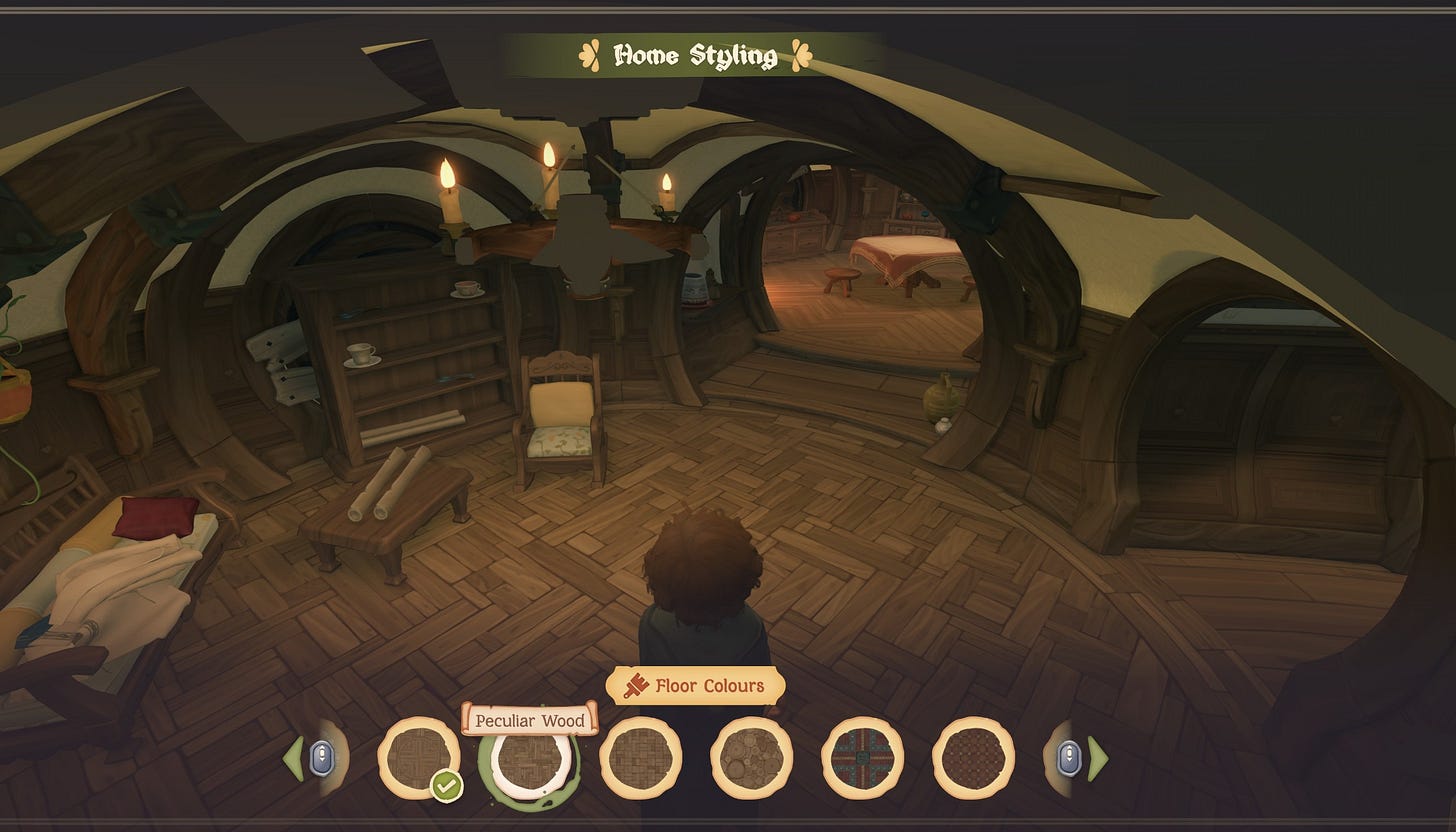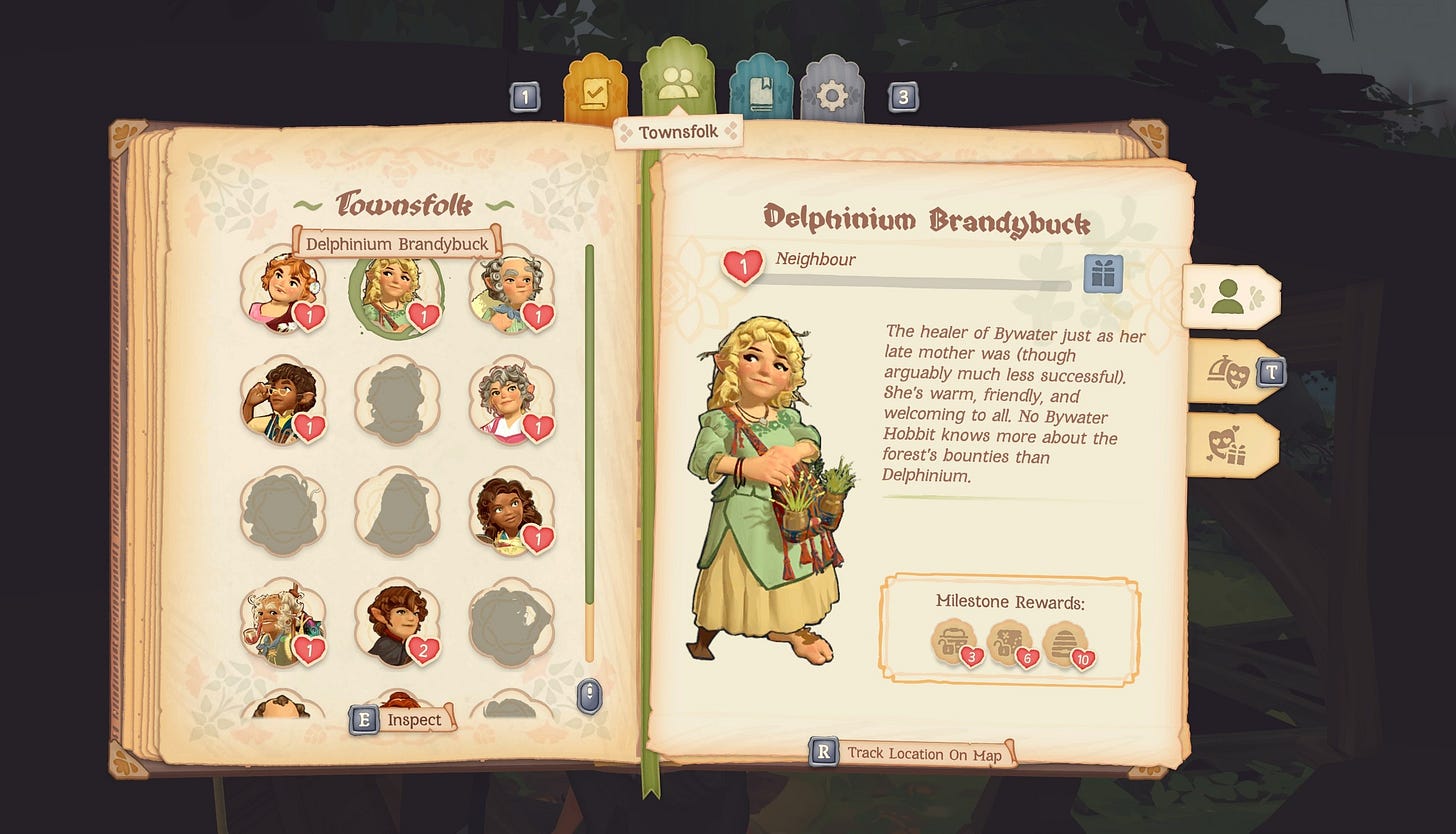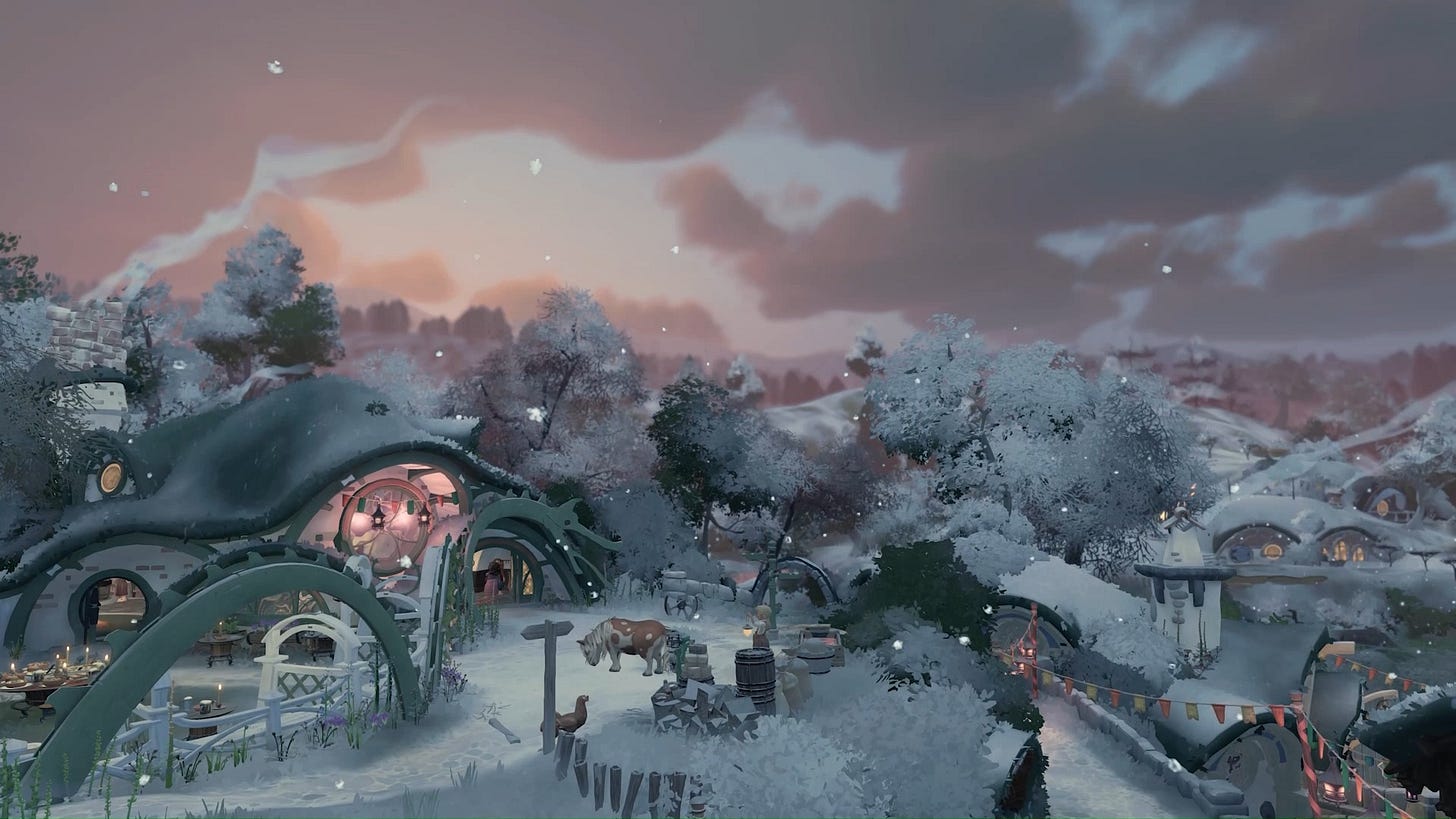Review: 'Tales of the Shire'
Wētā Workshop invites us back to the Shire, and I'm packing my bags
Ask any Lord of the Rings fan about where in Middle-earth their dream home would be, and chances are significant that the answer will be the Shire. It is certainly my dream, the dreamy and somewhat scatterbrained J.R.R. Tolkien nerd that I am: if I had suddenly—and quite magically, I might add—been transported to a place of my choice in Middle-earth, it would be there.
You can see it now, can’t you? Frodo was right to be in love with the Shire, as Bilbo put it in Peter Jackson’s The Lord of the Rings: The Fellowship of the Ring. The woods, the fields, the little rivers. J.R.R. Tolkien's own descriptions evoke the Hobbits’ deep-seated love, not for some abstract ideal, but their home, as tangible and real as an imaginary place can be:
"They were in the heart of the country, and in the autumn of a good year. The fields were ripe and golden, and the apples red on the bough. The air was full of the murmur of bees and the smell of clover."
— J.R.R. Tolkien, The Fellowship of the Ring
These words, and many others from J.R.R. Tolkien’s books, laid the foundation for how artists Alan Lee and John Howe helped director Peter Jackson imagine The Shire on screen. When the time came for the production of what would become one of cinema's most beloved trilogies, the New Zealand-based special effects company Wētā Workshop put it all together, bringing the town of Hobbiton—where we first meet Bilbo and Frodo Baggins—to life.
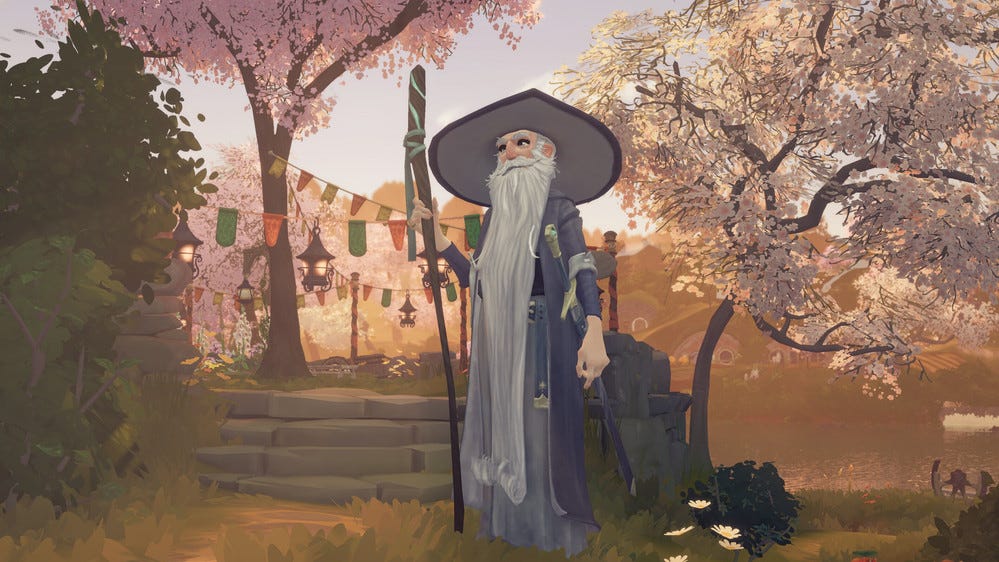
In fact, the Hobbiton movie set, rebuilt for Peter Jackson’s The Hobbit trilogy, still stands on the North Island of New Zealand. In 2022, I had the chance to visit it during a three-week trip around the country. This journey was part-work, part-pilgrimage, and it took me to many of the iconic shooting locations from the films. I also visited Wētā Workshop for a behind-the-scenes tour to meet the craftspeople, and conducted in-depth interviews with both company head Richard Taylor and artist Daniel Falconer.
Gaming in Middle-earth is far from a new thing. For decades, players have waged war and adventured across its digital landscapes, from nostalgic classics like War in Middle-earth to the vast, persistent world of The Lord of the Rings Online. Most titles have focused on the epic conflicts that define the setting, allowing us to fight the forces of darkness head-on.
Lately, however, developers have tried more experimental approaches. We've seen the excellent survival-crafting game Return to Moria, following Dwarves reclaiming their ancient halls of Khazad-dûm, and the ill-fated stealth adventure The Lord of the Rings: Gollum. Now the time has come to paintt the Shire on this digital canvas, and who better to do it than the creatives who brought it to life on screen in the first place?
Enter Tales of the Shire. This is the debut game developed by Wētā Workshop and published by Private Division, a company known for championing titles from small and mid-sized indie studios. Releasing across a wide range of systems—including Windows, PlayStation 5, Xbox Series X/S, and even mobile—the game lets players take on the role of a hobbit and settle down in a secluded part of the Shire.
So without further ado, let me introduce you to my avatar in this cozy little corner of Middle-earth: the hobbit Heribald Hogg. Originally from the town of Bree, east of the Shire, he received a letter stating that he had inherited a hobbit-hole in Bywater, across the Bywater Pool from Hobbiton. So he made his way west.
But hobbits are as hobbits do, and he fell asleep by the Road after Second Breakfast. And there he snoozed, until a tall fellow with a long beard and a wide-brimmed hat rode along in his cart. Waking up the drowsy Heribald, the stranger offered him a ride to Bywater, as it was on the way to Hobbiton, where he had important business. But he didn’t say that, of course. Secret and safe is the business of Wizards, after all.
At this point, the game had just started. I created my hobbit to play—Heribald Hogg—choosing his appearance, clothing, hairstyle, and even the hair on his feet. I had wanted to call him Heribald Halfbuckle, the name of the hobbit I sometimes played in The Lord of the Rings Online many years ago.
For some reason, however, I could only choose a custom first name, not the surname. The tall stranger soon introduced himself as Gandalf. Luckily, once I was settled in my new hobbit-hole, I discovered that the dressing closet allowed me to change not only my clothes but also my hair and even my name.
And here, my life as a hobbit could begin. After meeting one of the nice (and hungry) Bywater residents, who had a hilarious letter for me, I got to see the hobbit-hole I inherited. It was a fixer-upper, so to speak, old and dusty, with barred doors and windows. But with some work and love, and with the help of the game’s excellent decorating system, where furniture and decorations could be moved freely around, and colors and paneling could be changed, it had a lot of “potential” as they say. So I got to work.
Next, I explored Bywater, making my way to the iconic tavern, The Green Dragon (where I’ve even had a beer and a meal in real life, but that’s another story), to meet some of the local hobbits. Here, the game does something beautiful: it gives you a journal. Everything is logged here, from your relationship rating with every character you meet to every item and resource you find, most of which are food-related, of course.
While exploring Bywater and meeting its interesting inhabitants, I began picking up the basic skills needed to get my hobbit-hole up and running: fishing, foraging, and farming, because all hobbits share a love for things that grow.
Time passes realistically in the game; days turn into nights, and the seasons change the landscape around you, from the fresh greens of spring to the golden hues of autumn and the quiet of winter. This rhythm of time is central to life in Bywater, allowing you to grow and expand your home as the year passes.
And so Heribald Hogg’s new life in Bywater began. Tales of the Shire is a hilariously cozy game. There are no Orcs to fight, no dungeons to delve into, and no magic rings—at least not in the hours I’ve spent playing. It’s also a small game, clocking in at around 3GB, at least on the Steam version I played.
Looking away from Heribald Hogg’s adventures for a moment, how is the game, really? Cozy, yes. But is it good? In a word, yes. When I first started it up, it took some time to get used to, even for an enthusiastic fan of all things Middle-earth like myself.
The lack of voice acting, for example, was jarring at first. However, I soon realized that Wētā Workshop had made this a part of the game’s charm. The choice to have no voice acting, focusing instead on the characters' expressions and the small noises they make, opens some doors. It allows you to play at your own pace without having to stop and listen to dialogue. On the other hand, it closes others, as this is not a game for those who, for various reasons, find reading a challenge.
When it comes to graphics, Wētā Workshop has created a whole new art style—one that also took some getting used to. This might be because we’re all so used to the visual styles of Alan Lee and John Howe, which not only inspired Peter Jackson’s films but also a host of other adaptations.
But when it finally clicked, helped by the atmospheric sounds and idyllic music, the beauty of the Bywater that Wētā Workshop had built from scratch was clear to see. Playing the game now, I couldn’t imagine it looking any different. It’s like a concept art book has come to life in brilliant, earthy colors, and I’m here for it.
And so, we have Tales of the Shire, the debut game from Wētā Workshop. In a media landscape filled with adaptations inspired, at least visually, by Peter Jackson’s The Lord of the Rings trilogy, this game confidently creates its own identity. It's an invitation for every fan to return to that one place in Middle-earth many of us dream of coming back to, again and again.
Tales of the Shire releases comes out on on several platforms on the 29th of July.


